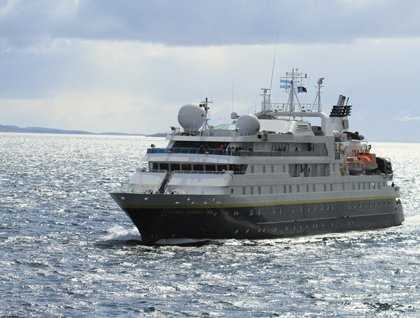Guests aboard National Geographic Explorer awoke from a night on the throbbing sea. All can say they truly experienced the Drake Passage; moderate seas but high wind. After a much needed breakfast in the calmer waters, out in front was a pinnacle for everyone to see. Cape Horn, the southernmost tip of South America, loomed in the distance. As plates were scraped and coffee was sipped down to a finish the vessel steamed ever closer. Albatross flew effortlessly across the water’s surface and giant petrels searched for food.
As the ship approached, the expedition staff and guests were able to spot a monument sitting atop a hillside peak on the Cape. This monument is of an albatross, the great marker of the sea itself. It is comprised of multiple metal plates which are offset, but fit together perfectly at a certain angle. If the viewer is peering from true south, the albatross wings will line up nicely to show the great bird in flight. This area is supreme and unique, at this one cape three oceans converge. One can find the great Pacific Ocean to the west, the Atlantic to the east, and the Southern Ocean to the south.
After a day of heavy packing and reflection on the expedition’s activities and amazing sights, the guests aboard the ship experienced a moment that perhaps offered the most reflection of all. National Geographic Orion—Explorer’s sister ship, had just made her pilgrimage down from Easter Island. The ship was heading to the Falkland Islands, then South Georgia, and finally the Antarctic Peninsula. To see the vessel head the opposite direction, wave to guests and friends aboard, and then watch her slowly fade into the distance offered a certain type of nostalgia one feels at the end of any voyage. With happy hearts and thoughtful minds, the guests returned to the lounge for one final informative lecture, and perhaps a bit of packing before they bid the ship adieu.









